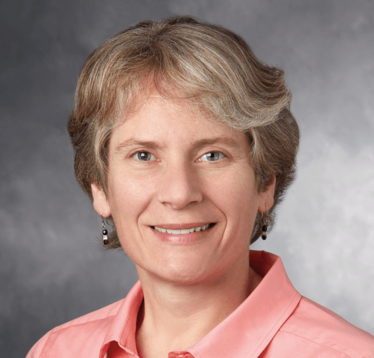Chemistry Connections
Sitting Down With… Carolyn Bertozzi, Anne T. and Robert M. Bass Professor of Chemistry, and Professor (by courtesy) of Chemical & Systems Biology and Radiology,Stanford University, USA.

Were you always interested in chemistry?
I think it started in college. As a pre-med student, I studied biology and took the courses required to go to medical school, but I unexpectedly found myself drawn towards one particular topic – inorganic chemistry – so I changed my major to chemistry. One of the reasons I found the subject inherently interesting was the connection to human health. The chemistry of medicine, the chemistry of life – that’s what drew me in.
You’ve worked across chemistry, glycobiology, oncology, nanoscience, biotech, and more... How?!
I’ve been very lucky – I’ve had access to many interesting opportunities, both academic and entrepreneurial. And, in my good fortune, I’ve been at great universities where there has been a lot of intellectual energy, with motivated, smart co-workers and students. But ultimately it comes down to a matter of time. If you want to explore different areas and pursue many activities, you need the right environment and the right people around you. But if you are fortunate enough to have the time, bandwidth, and support to do so, then I’d absolutely go for it. It’s enriching to have that kind of exposure, both for students and fellow scientists.
Do you think collaboration across multiple fields is becoming more important?
It’s definitely happening at the training level. For example, I know that PhD programs have been trending towards interdepartmental disciplinary programs; I even launched one at Berkeley that interfaced between chemistry and biology. We also have one here at Stanford that’s even more broad – connecting engineering and medicine departments. I think there’s a whole cohort of scientists who are going to come out of training in this decade and the next who will be able to easily bypass barriers. It’s already happening in biopharma and I believe other biosciences are going to see the benefits soon. But, as with exploring different branches of bioscience, it ultimately comes down to how much time you have and, unfortunately, a lot of doctors don’t have much to spare.
What field currently interests you?
Glycoscience has been a highly interesting field to work in, compared with some other areas in biomedicine. It often feels like glycoscience runs in cycles – one moment everyone’s excited and enthusiastic, the next moment things cool down for a while and seem harder than people thought. But at the moment, there’s a lot of enthusiasm and optimism. It’s a big period of excitement because there’s research coming out from different areas that are starting to gain a better understanding of glycobiology’s contribution to cancer immunology, and that’s a really hot area right now. I think it’s putting the spotlight on glycoscience again, which is cool.
What do you think of the digital direction of pathology?
Stanford is kind of a hotbed of AI-based image processing at the moment, and there has been a big collaborative program between some Stanford pathologists/ radiologists and people at Google. It’s a big AI team and I think if it leads to accurate, actionable diagnoses for patients, we should use whatever tools are at our disposal. I’d hope that all pathologists would embrace that, but I think there’s a universal human trait that means whenever a new technology breaks on the scene, there’s some part of the human psyche that has a little bit of pushback. But I don’t think pathologists are ever going to be replaced. I don’t think anyone is suggesting we let robots take pictures and make diagnoses while we just become servants to them...
What advice would you give to your younger self?
Don’t sweat the little stuff. It’s easy to get stressed out about loads of minor details, especially in glycoscience. It’s easy to get frustrated with the complexities of the moment, so make sure you never lose your perspective.
You’ve already achieved a great deal – where to next?
I’ve never thought, “I’ve achieved so much.” It’s more a case of, “Oh god, we still don’t understand this?!”
When I first moved to Stanford about two and a half years ago, I had the privilege of taking on a bunch of new projects that arose through new colleagues that have reached out to me. Some are based on the curiosity around glycoscience, some are nonprofit collaborations, others are focused on my HIV work.
I moved to Stanford partly because it has a medical center and a focus on the clinical sciences. Basic science-oriented projects that I started at Berkeley have taken a more translational path here. One example is the platform that we developed for ultrasensitive antibody detection, which is the same platform used for the oral fluid HIV test that we recently published (1). HIV is just one of several things that we can test for with such platforms – other infectious diseases, for example, or early detection of type 1 diabetes.
I’m hoping to accelerate down the home stretch towards achieving something I haven’t been able to before: producing a therapeutic. Ultimately, I’m hoping that the science we’re doing is going to have a beneficial impact on human health – after all, that’s always been the end goal.
- W Aryitey, “Super saliva test”, The Pathologist, 39, 11, (2018). Available at: bit.ly/2FGl2OL.
My fascination with science, gaming, and writing led to my studying biology at university, while simultaneously working as an online games journalist. After university, I travelled across Europe, working on a novel and developing a game, before finding my way to Texere. As Associate Editor, I’m evolving my loves of science and writing, while continuing to pursue my passion for gaming and creative writing in a personal capacity.















